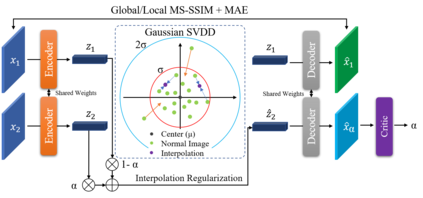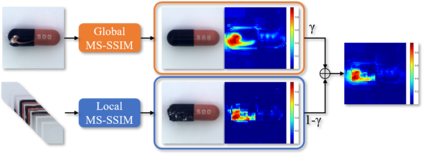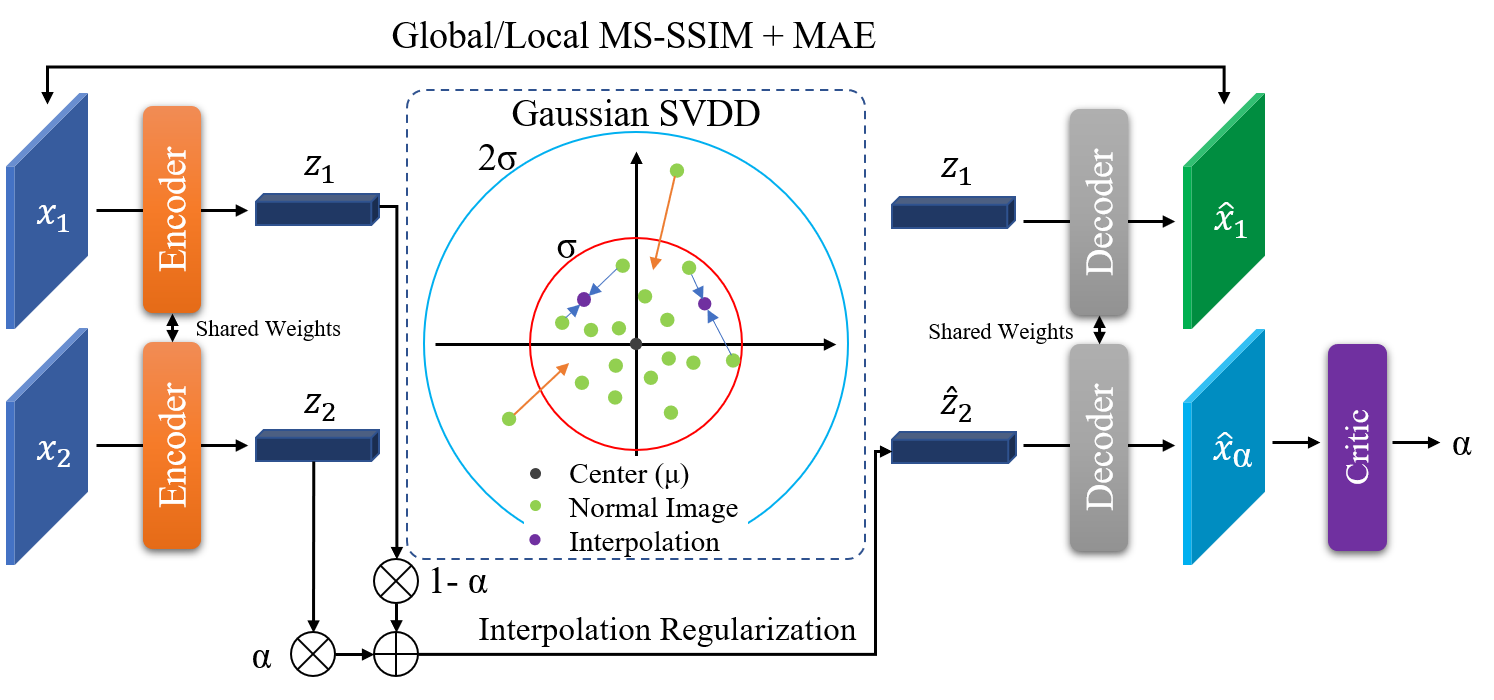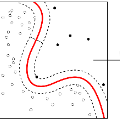Current unsupervised anomaly detection and localisation systems are commonly formulated as one-class classifiers that depend on an effective estimation of the distribution of normal images and robust criteria to identify anomalies. However, the distribution of normal images estimated by current systems tends to be unstable for classes of normal images that are under-represented in the training set, and the anomaly identification criteria commonly explored in the field does not work well for multi-scale structural and non-structural anomalies. In this paper, we introduce an unsupervised anomaly detection and localisation method designed to address these two issues. More specifically, we introduce a normal image distribution estimation method that is robust to under-represented classes of normal images -- this method is based on adversarially interpolated descriptors from training images and a Gaussian classifier. We also propose a new anomaly identification criterion that can accurately detect and localise multi-scale structural and non-structural anomalies. In extensive experiments on MNIST, Fashion MNIST, CIFAR10 and MVTec AD data sets, our approach shows better results than the current state of the arts in the standard experimental setup for unsupervised anomaly detection and localisation. Code is available at https://github.com/tianyu0207/IGD.
翻译:目前未经监督的异常探测和本地化系统通常被设计成单级分类系统,这种分类方法取决于对正常图像分布的有效估计和确定异常的可靠标准,然而,目前系统估计的正常图像的分布对于在培训组中代表性不足的正常图像类别而言往往不稳定,而通常在实地探讨的异常识别标准对于多级结构和非结构性异常并不起作用。在本文中,我们采用了一种未经监督的异常探测和本地化方法,旨在解决这两个问题。更具体地说,我们采用了一种正常的图像分布估计方法,该方法对代表性不足的正常图像类别来说是强有力的 -- -- 这种方法基于培训组和高斯分类器中的对抗性内插式描述器。我们还提出了一个新的异常识别标准,可以准确检测和本地化多级结构和非结构性异常。在对多国空间信息系统、法西根系统、CIFAR10和MVTecAD数据集的广泛实验中,我们的方法比标准实验组的艺术现状要好。







